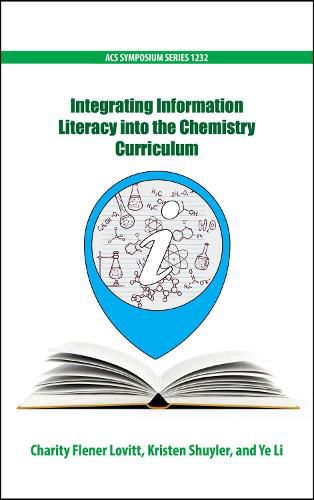Readings Newsletter
Become a Readings Member to make your shopping experience even easier.
Sign in or sign up for free!
You’re not far away from qualifying for FREE standard shipping within Australia
You’ve qualified for FREE standard shipping within Australia
The cart is loading…






Information literacy-the ability to find, evaluate, and use information resources-is an important skill for future chemists. Students and scientists need to distinguish between information provided by Wikipedia, ChemSpider, research journals, and The New York Times, depending on the intended use of the information sought. Instructors and librarians may often teach these skills through stand-alone database demonstrations, video tutorials, and lectures. However, it is possible to teach these skills in a more contextual and integrated manner by designing chemistry assignments that incorporate information literacy as a learning outcome. This book will prove useful for librarians and chemistry instructors who are designing courses in which students develop information literacy in the context of a chemistry course at two-year colleges, public and private universities, and high schools.The chapters in this book review the current state of information literacy in chemistry and provide concrete examples of assignments and interventions aimed at teaching information literacy skills in chemistry curricula. A wide range of options are offered for integrating information literacy into college-level chemistry courses, including general chemistry, organic chemistry, science courses for students not majoring in science, and chemistry capstone research courses.
$9.00 standard shipping within Australia
FREE standard shipping within Australia for orders over $100.00
Express & International shipping calculated at checkout
Information literacy-the ability to find, evaluate, and use information resources-is an important skill for future chemists. Students and scientists need to distinguish between information provided by Wikipedia, ChemSpider, research journals, and The New York Times, depending on the intended use of the information sought. Instructors and librarians may often teach these skills through stand-alone database demonstrations, video tutorials, and lectures. However, it is possible to teach these skills in a more contextual and integrated manner by designing chemistry assignments that incorporate information literacy as a learning outcome. This book will prove useful for librarians and chemistry instructors who are designing courses in which students develop information literacy in the context of a chemistry course at two-year colleges, public and private universities, and high schools.The chapters in this book review the current state of information literacy in chemistry and provide concrete examples of assignments and interventions aimed at teaching information literacy skills in chemistry curricula. A wide range of options are offered for integrating information literacy into college-level chemistry courses, including general chemistry, organic chemistry, science courses for students not majoring in science, and chemistry capstone research courses.